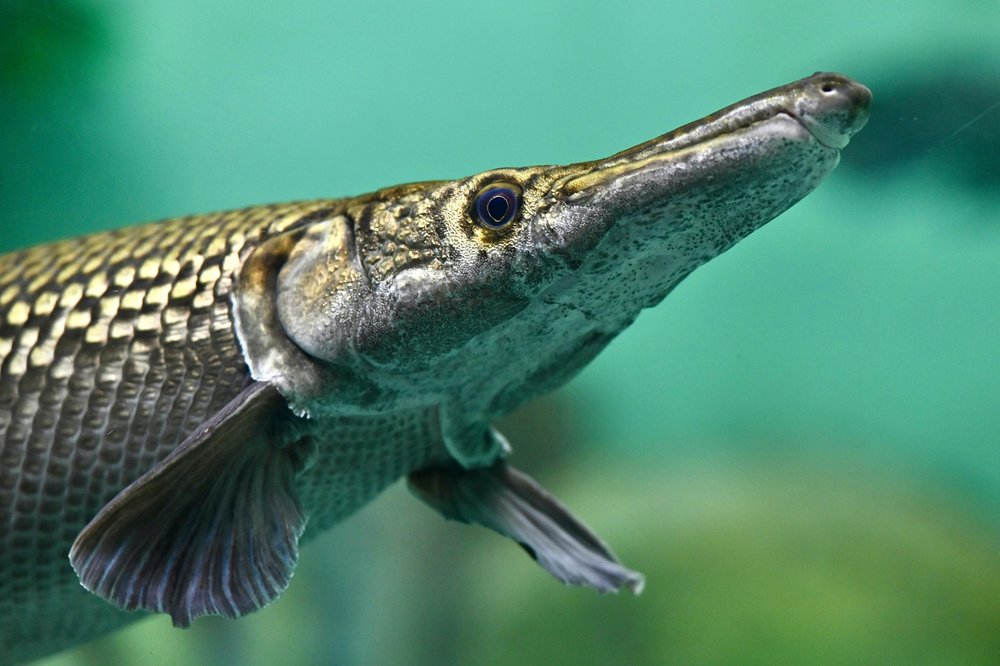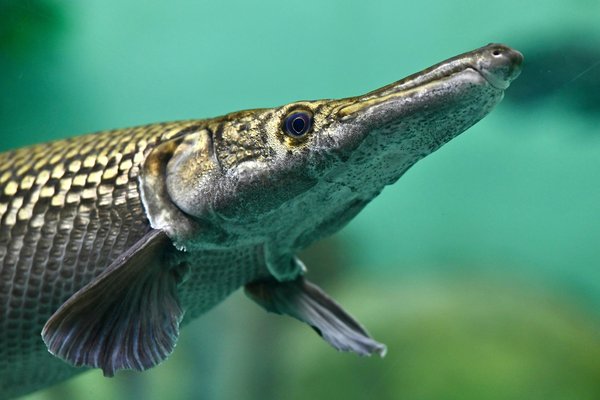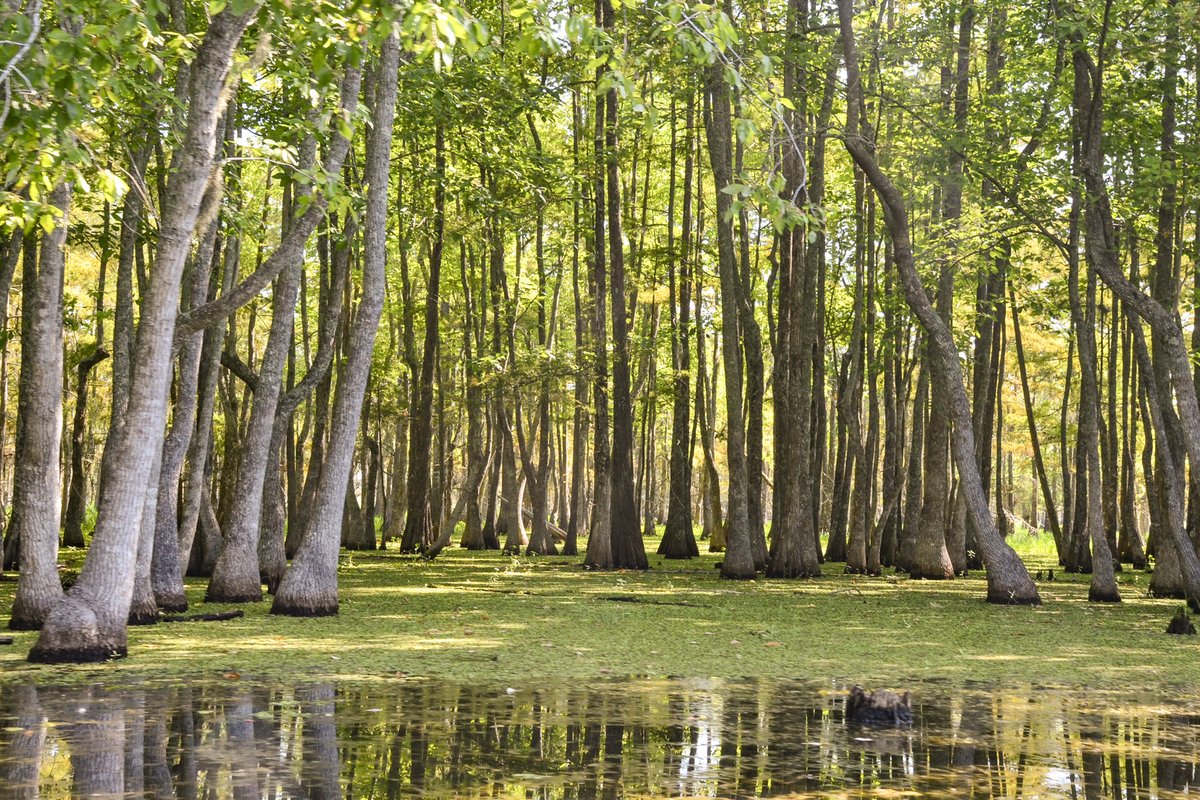In July 1945, the U.S. detonated its first atomic bomb at a test site in Alamogordo, New Mexico. This launched a period of nuclear activity that lasted decades, with the Soviet Union, the U.K. and other countries following suit to test their atomic weapons.
This nuclear age changed the face of world politics forever — and it also changed the biology of every creature alive at the time, including Texas' largest freshwater fish, the alligator gar (Atractosteus spatula). Now, TPWD scientists are using the traces left by nuclear testing to determine how old gar can get. And the answer to that question might surprise you.
How old is that fish?
Alligator gar have been nicknamed “living fossils” because their biology remains mostly unchanged over 100 million years. They're born in extreme flood events, and grow up to lurk in Texas rivers for decades to come. But exactly how many decades? That's what Texas Parks and Wildlife Inland Fisheries biologist Dan Daugherty and his team wanted to know.
The age of a fish can tell researchers a lot of things. “Age is one of the major components of being able to manage fish right,” says Daugherty. “It tells you so much about growth. It tells you so much about longevity. It tells you about life history strategy.”
To determine the age of a fish, scientists typically turn to the creature's ear stone, or otolith. “It's akin to your inner ear bone,” says Daugherty. “We collect the otoliths from fish, and then we section them and polish the section surface. And then you can usually see rings — or annuli — laid down every year like the growth in a tree when you cut it off at the stump.”
This works really well for young fish. “But once those fish get to be around their teenage years, they start to really slow down in growth,” says Daugherty. “You see a really big change from nicely spaced annuli that you can count really easily, to a section of the otolith where, from that point on, the rings are stacked really tight. It's like turning a book on edge and trying to count the pages. We could do that, but it's difficult, and you never know if you're counting it right.”
From what Daugherty and his team estimated using the otoliths, Texas gar grew to the ripe age of 60 to 70. But since counting the otolith annuli left some room for error, Daugherty and his team decided to try something new.
Aging fish is a blast
Instead of visually counting the rings, the researchers turned to a well-studied technique called radiocarbon dating. This method uses carbon 14, an rare carbon isotope found in the earth's atmosphere, to measure the age of organic materials.
Carbon 14 occurs naturally, and decays at a steady rate. If you have a given amount of carbon 14, in around 5,370 years, half of the carbon will have decayed into nitrogen 14.
Radiocarbon dating is usually used to study long-dead creatures to figure out how long ago they were alive. By measuring the amount of carbon 14 in an organic material, scientists can back-calculate how long that carbon 14 has been decaying. But there's also a way to use this method to age living creatures — and that's where the bombs come in.
When many countries were testing nuclear weapons in the mid-1900s, they caused levels of carbon 14 in the atmosphere to spike. If a fish was alive during that period, its otolith would show elevated levels of carbon 14. “It's kind of a timestamp,” says Daugherty. “If you were alive at that time, you've got this information locked in saying, ‘Yes, I was alive when this spike happened.’”
The team took samples of Texas alligator gar otoliths and sent them off to Woods Hole Oceanographic Institute in Massachusetts. There, researchers used a machine called an accelerated mass spectrometer to measure the amount of carbon 14 in different sections of the otoliths.
The results showed that Daugherty and his team were accurate with their estimates. “We did this with, like, 20 to 30 fish, and they all lined up essentially perfectly — within a couple of years — with what [we had expected when we aged them visually],” he says.
Grandmother gar
In 2011, the largest alligator gar on record was caught in Mississippi as bycatch in a commercial gill net. The fish measured a whopping 8 feet, 5.5 inches, and weighed 327 pounds. The Mississippi Department of Wildlife, Fisheries and Parks collected its otoliths, and sent them to Daugherty and his team — now proven experts in the gar aging field — to analyze the age.
“Our lab aged them visually at 95 years old,” Daugherty says. “But all of our fish [we'd aged before] were in the 60 to 70 range — we didn't have any fish that were 90-plus in Texas.”
Knowing that their estimates could be one or two years off when the fish was 60-70, the researchers wondered if there could be a wider margin of error — say, five to six years — with a much older fish.
“That's important when you get to that 90- to 100-year range, because essentially, that's a fish that can tell you if you have a centenarian species — a species that can live 100 years or more," says Daugherty. "And so we were interested in finding out whether that 95-year-old age estimate was accurate or not.”
The team got back in touch with their Woods Hole collaborator, and sent in the giant fish's otolith for testing. When the results came back, they showed that the fish was exactly 100.5 years old.
The centennial birthday is not just a fun milestone for a species — it also informs researchers about the fish's life history. “The ability to live that long evolves for a reason,” says Daugherty. “Most likely because an individual doesn't have the opportunity to successfully reproduce often.”
Some species of fish reproduce every year, and many of their offspring survive. These fish don't typically live very long. “They grow and mature, they spawn, they contribute their genetics to the population, and then they die,” says Daugherty.
As an apex predator in Texas waterways, gar are essential to maintaining balance in river ecosystems. TPWD currently limits harvest of gar, and works with landowners and reservoir authorities to make sure the fish have access to floodplain spawning habitats. Knowing how old gar can get can help Daugherty and TPWD more successfully manage this species.






